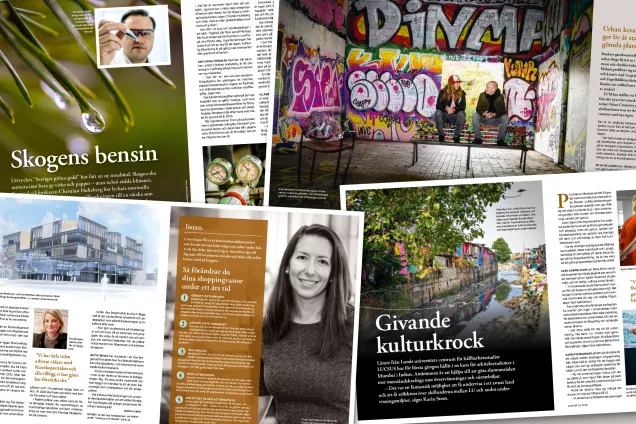Memory researchers and cognitive scientists have conducted a lot of research into how the sound environment affects learning in schools and pre-schools. Now researchers have started studying the University’s sound environment on the basis of the same models used in schools.
“Good acoustics are required in a university environment, as both employees and students often process heavy intellectual material”, says Frans Mossberg, a researcher at the Sound Environment Centre at the Faculties of Humanities and Theology.
At the University, it is mainly entrance atria, office environments and lecture halls that present major challenges from a sound environment perspective. When a lecture hall has such bad acoustics that you have to strain to understand what the lecturer is saying, it becomes difficult to absorb any content.
“We can learn from people with actual hearing impairments. They have to work so incredibly hard just to hear and understand during a lecture that they are completely exhausted afterwards”, says Frans Mossberg.
The idea of the Sound Environment Centre is to enable an overview and gather all the disciplines involved in sound environment issues, such as medicine, engineering, design, conservation, ethnology and law.
Medicine, for example, is involved because the sound environment can trigger various conditions. Noise is a known stress factor and can affect people with cardiovascular diseases or type 2 diabetes and increase the risk of stroke.
“Sometimes you don’t want to eliminate sound; there are also experiments conducted to add sound in certain environments. At the Swedish University of Agricultural Sciences (SLU), researchers are developing therapeutic sound gardens. It is hoped that these will make it easier for dementia patients, for example, to hear the sounds of nature in their everyday lives”, explains Frans Mossberg.
Frans Mossberg thinks that most research into open office landscapes unfortunately confirms the suspicion that they were not a brilliant idea. But it is possible to work on several aspects to improve this type of sound environment.
“It does not need to be completely silent in order to be a good sound environment. I usually think about it as a distance perspective – we hear small sounds that contribute to our ability to orient ourselves in our surroundings, precisely like bats. But if, for example, a Harley Davidson started revving right next to us, we would not be able to hear anything”, says Frans Mossberg.
It is about achieving a relative attenuation of the sound in the room; that work includes teaching people to show consideration by keeping their voices down, for example.
“Small talk between colleagues can be very disturbing. As human beings, we are adapted particularly to pick up human voices and therefore find it difficult to ignore the sound of conversations”, says Frans Mossberg.
Adjusting the acoustics in the room using ceiling panels, carpets, furniture materials and lay-out is also essential. Another part of the work is to map disturbing signs such as fans, things that rattle, how people enter and exit the room and so on. Reducing the reverberation of sound in a room automatically affects human behaviour.
“People become a bit more cautious and you get a more serene environment with peace and quiet for work or study”, says Frans Mossberg.
TEXT: GISELA LINDBERG



